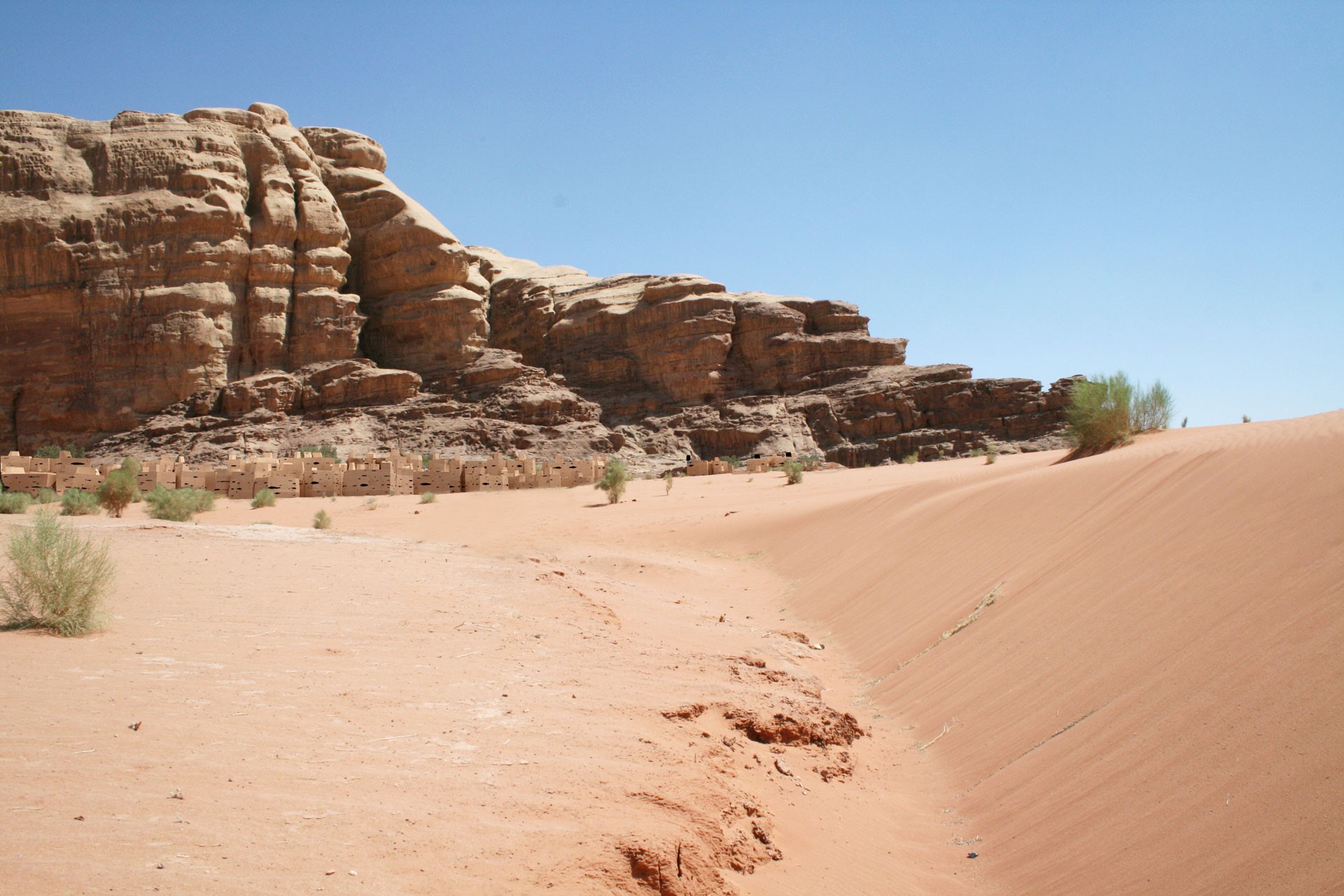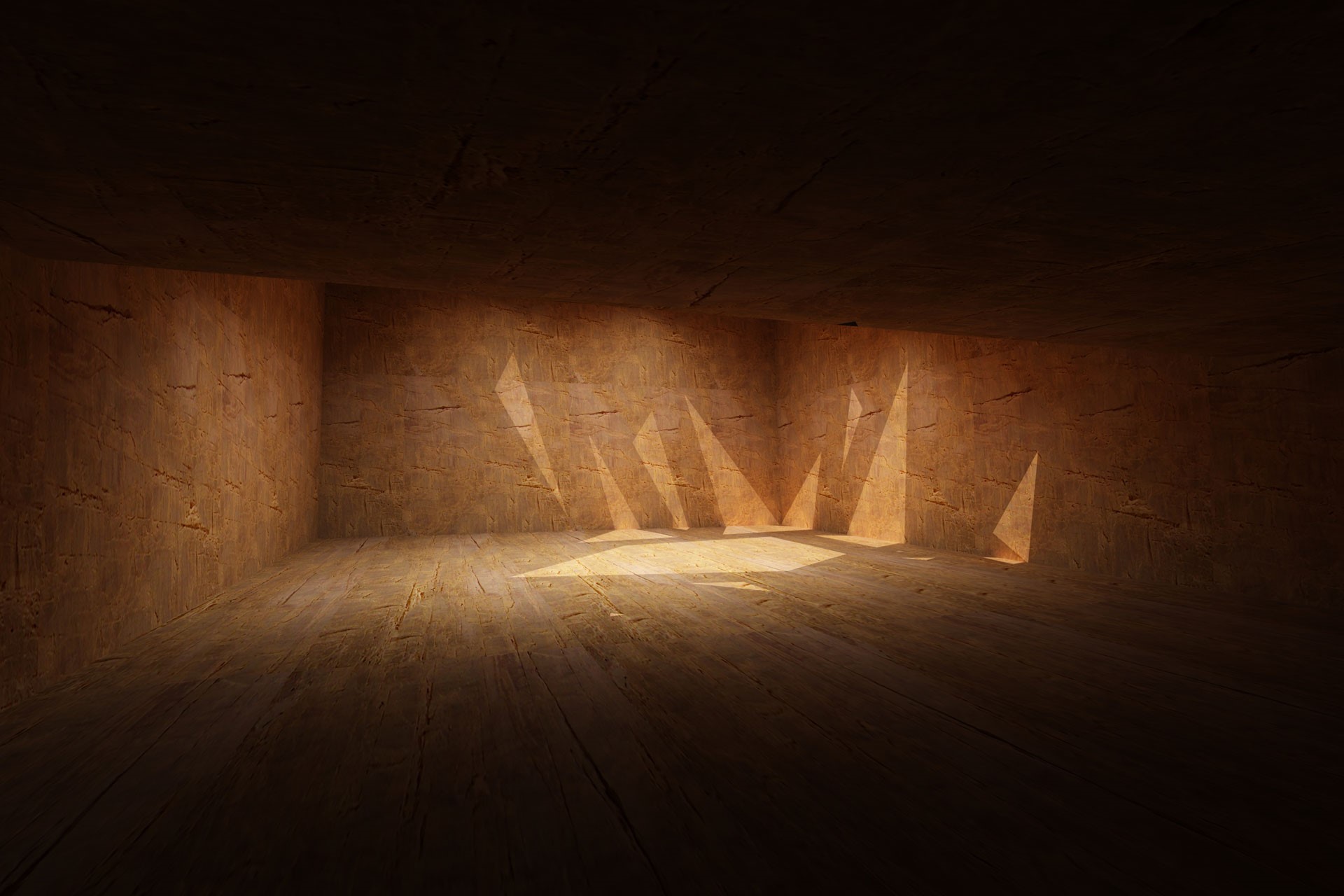Najwa Resort is located in Wadi Rum, one of Jordan’s most important natural history sites. The resort will target eco-travelers, and therefore its 3km2 site was left largely untouched. The intervention was designated to three particular zones that were designed as self-sufficient and experientially diverse. The zones consist of the resort's service area, the main accommodation, and the spa. The service complex is located on a low topographic point, allowing the building minimum visual impact on the landscape. The second zone houses the main accommodations, designed as individual units, organically grouped in a village-like manner. Their density, form, and pattern originate from the patterns found in the claypans common to the area. Each unit is an introverted object containing a courtyard. The introversion is typical of traditional desert dwellings, to shelter their inhabitants from the harsh desert environment. The third zone is a spa nestled between two elevated rock formations and built around a series of boulders. It is intended to appear as a datum (wall) against which the landscape may be read. This barrier guarantees privacy and creates an introverted design quality. The spa's suites are located on the other side of the rock formation to maximize privacy and assign only one function per area. The suites are submerged between a series of parallel stone walls and receive light and ventilation through a number of patios. The roof of each unit is used as an outdoor dwelling, shaded by awnings. The general complex of units appears as a gesture of walls that grow out of or extend into the sand.
Project in collaboration with Cristiano Bartolini










